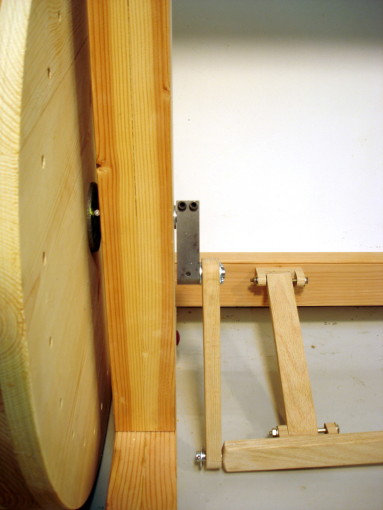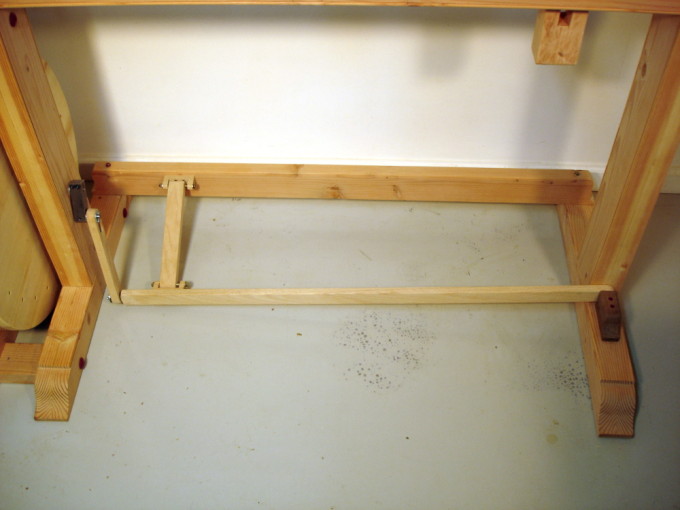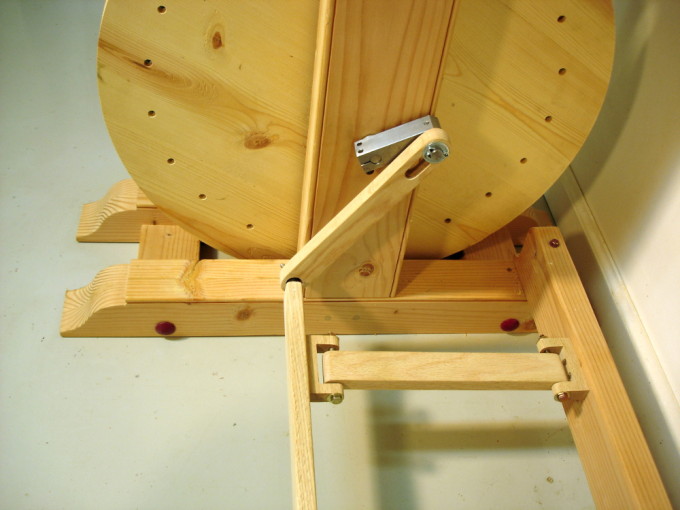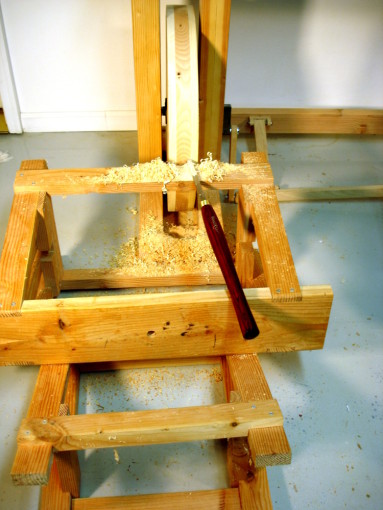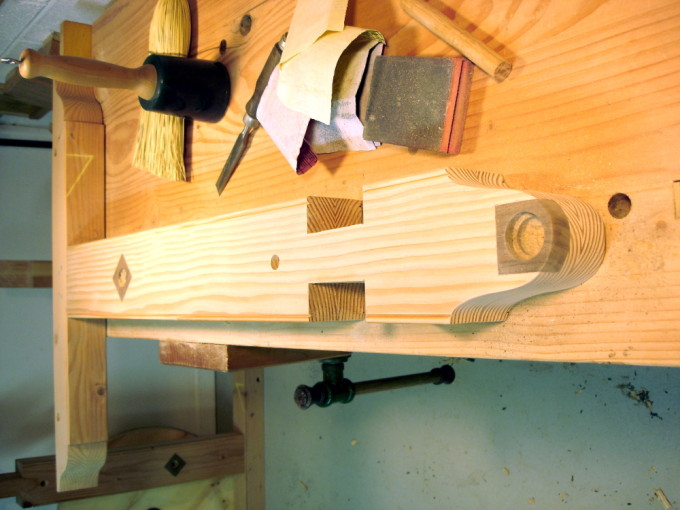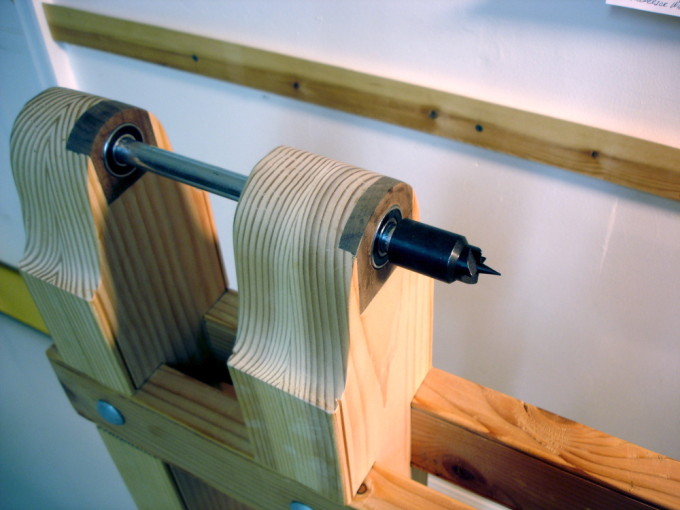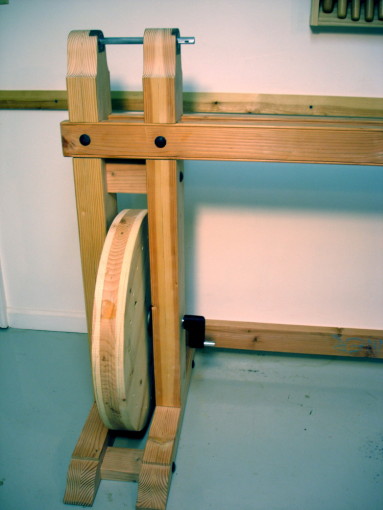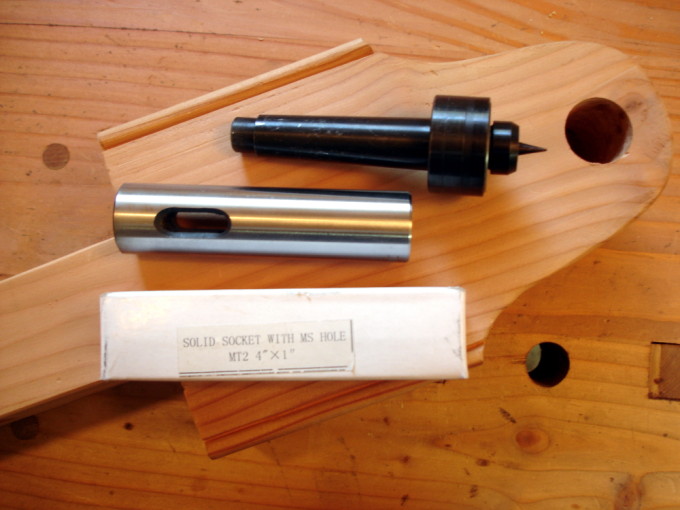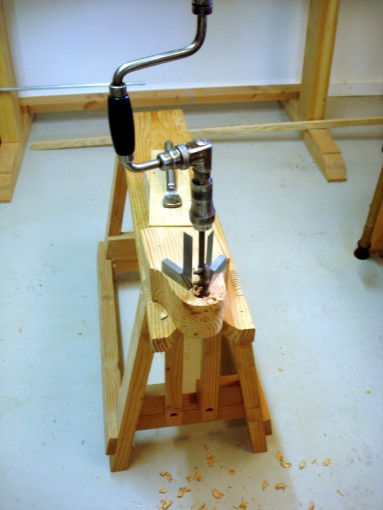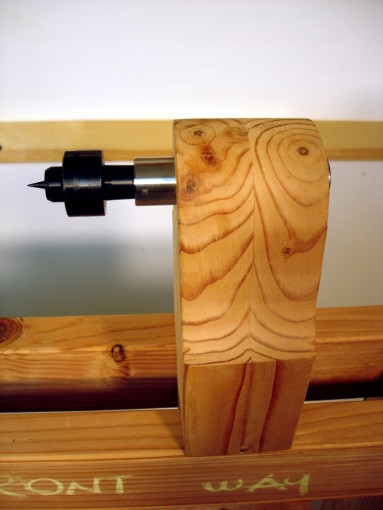Roger Davis is a fortune teller, and a fellow Hoosier.
Roger and I met quite awhile back over on the Sawmill Creek forums talking about, what else, old tools. Not long after I published the last entry, Roger advised that the walnut crank probably wouldn’t last long. Now, it hasn’t actually failed but it didn’t take long for a bit of wobble to develop. Roger is a fellow woodworking enthusiast who also has day-job metal working skills and the equipment for prototyping aerospace instrumentation. Roger offered to make a “bulletproof” steel crank and I took him up on the offer. I’m absolutely amazed that he offered and acted so quickly. The crank is here and already in use. THANK YOU Roger!
By the way, for the spalted maple fans, be aware that there’s such a thing as spalted steel. This crank has a bit of spalting which I consider early onset patina.
The Treadle Mechanism
When I was much younger and more interested in high performance automobiles, one of the things I learned about was “unsprung weight.” That’s the weight of the car in the wheels, axles and undercarriage that isn’t moderated by the suspension system. A lot of unsprung weight dampens a car’s performance. The lower the amount of unsprung weight, the better performance can be tuned. This lathe takes that approach with the treadle. I’ve seen a lot of treadle lathes that have huge heavy treadle mechanisms. It seems to me that the effort that goes into operating a heavy treadle has the same dampening effect as excessive unsprung weight in cars. I can appreciate how a heavy flywheel adds momentum, but not if it has to drag along the dead weight of a heavy treadle. The lighter treadle was part of what drew me to this design.
Three lightweight parts comprise the moving components, the treadle itself, a Pittman link, and a spacer bar that keeps the treadle parallel to the center line of the lathe. All three are of oak approximately 3/4″ by 1-1/2″ in measure. The treadle pivots on a 1/2″ diameter pin that’s held in the walnut block on the foot of the right leg. The pivot hole itself is 3/4″ diameter providing enough play for easy operation. The driving end of the pedal holds another 1/2″ diameter pin that engages the Pittman link. The bottom hole on the Pittman link is also 3/4″ diameter, allowing for a lot of angular movement. At the top of the Pittman link is a slot that is “a whisker” larger than 1/2″ wide, enough to ride freely on the crank’s 1/2″ diameter drive pin. Two u-shaped oak blocks anchor the spacer bar. The anchor pins are 1/4″ bolts fitted in 1/4″ holes in the blocks. The pivot holes in the spacer bar are 5/16″. Thinking these parts might need lots of wiggle room, I tried a much loser version and ended up with a lot of clunking. The tighter version runs smoothly and without any binding.
As before: Il meccanismo è molto scorrevole!
First Turning – a 24 inch object
A couple of posts back, I mentioned that the flywheel was cut round using a jig on the band saw. Well, that “round” was approximate. It wanted some truing, not a lot but enough to make me wonder about how well a belt would track. How to get it trued up? Makeshift time!
Finding a “tool rest” of an appropriate height was the first challenge. What the photo shows is an alternate use for the pair of saw benches I made ages ago. Flop them over on their sides and stack them “just so,” and the result is something good for supporting a newly arrived round nosed scraper. Not having a readily available treadling apprentice, I parked a chair beside the upturned saw benches, sat down, and treadled while leaning over and holding the chisel.
The wheel is now round. The drive belt won’t have to put up with a roller coaster ride. If you watch the wheel turn, you’ll see some side-to-side wobble, for which there are two responses: don’t watch, and it’s not enough to affect operation. 🙂
